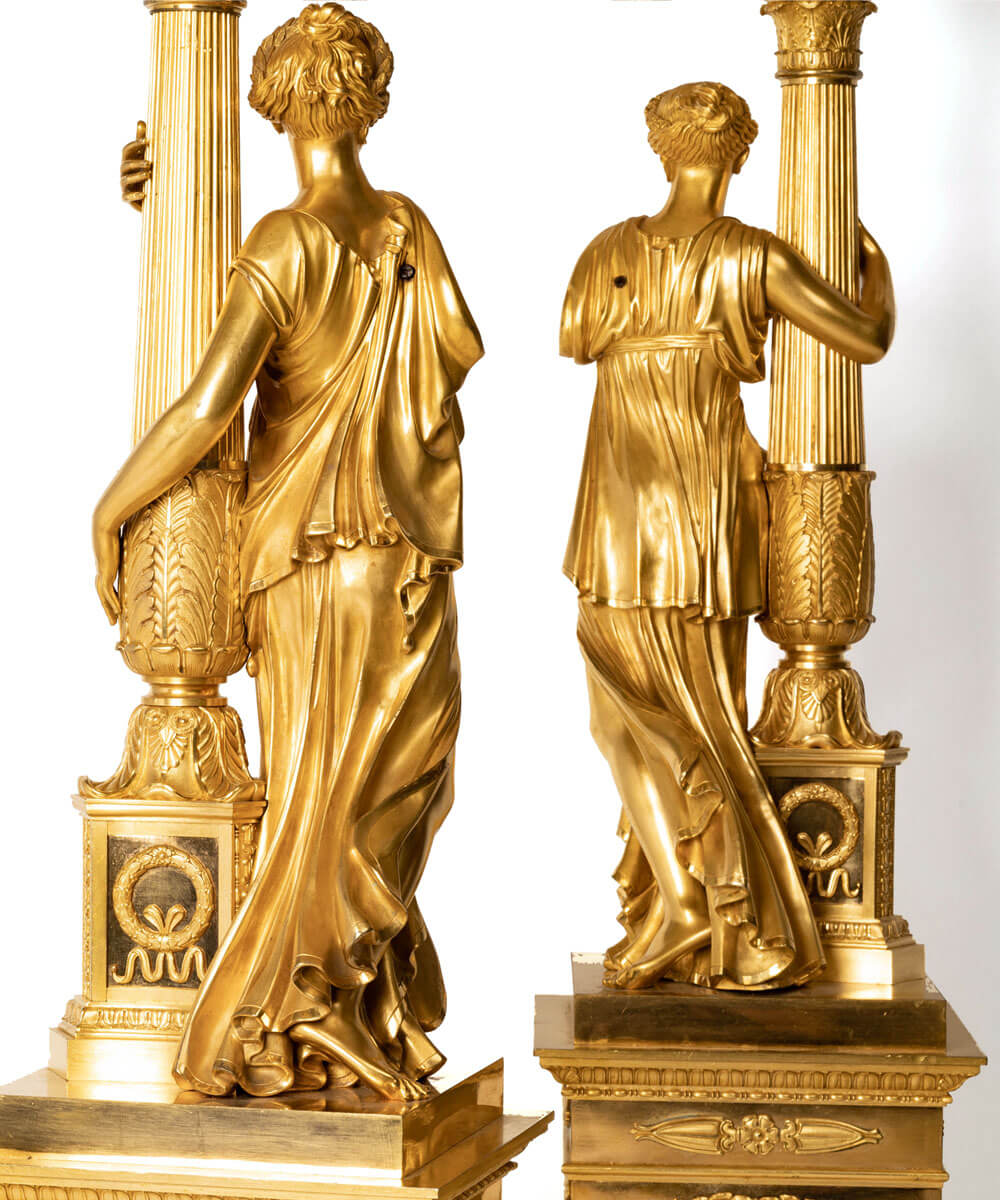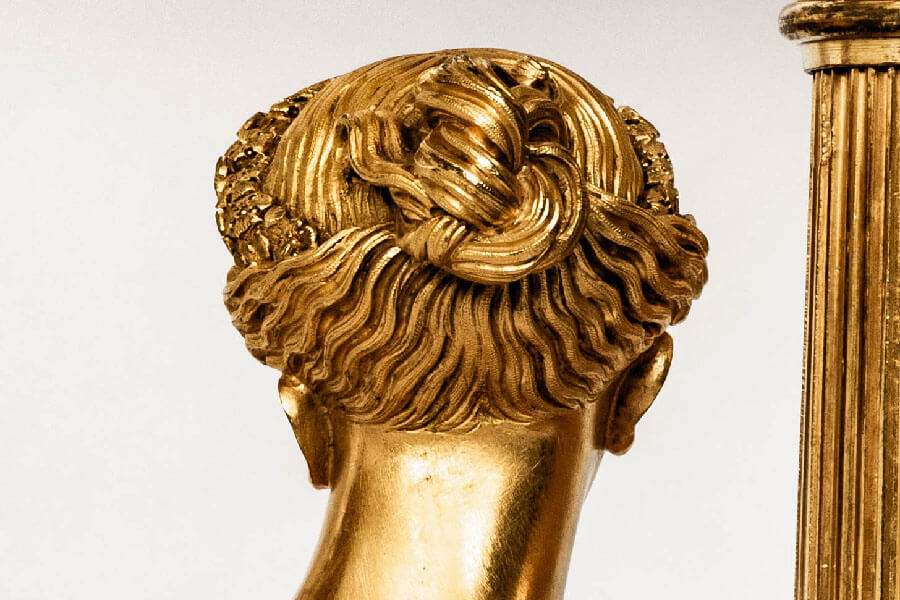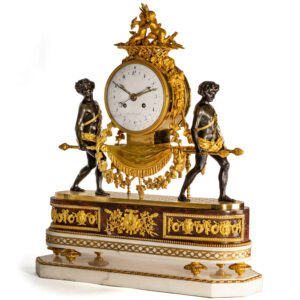Extraordinary quality and beauty
This impressive pair of candelabra is attributed to Pierre-Philippe Thomire based on the numerous stylistic similarities with works famously made by this extraordinary bronze artist; the quality, beauty and size of these candlesticks are not common.
The two candelabra represent two Greek Muses:
Erato, teacher of letters, sciences and arts, and
Euterpe, who presides over music, lyrics and poetry.
In Greek mythology, the Muses were goddesses who presided over several branches of the arts and sciences. They were the nine daughters of Zeus, king of the gods, and Mnemosyne, the goddess of memory. Apollo, the god of light, music, prophecy and poetry, was their leader.
The use of classical muses in support of candelabra was a popular design in 19th-century French decoration.

Pierre-Philippe Thomire bronze artist
Pierre-Philippe Thomire (1751–1843), a French sculptor, was the most prominent bronzier of the First French Empire‘s ornamental patinated and gilt-bronze objects and furniture mounts.
His fashionable neoclassical and Empire style furnishing bronzes established the highest standard for that time. He had received his training in the workshop of Pierre Gouthière, the outstanding Parisian ciseleur-doreur working in the Louis XVI style, before establishing his shop in 1776.
Succeeding Thomas Duplessis as bronzier at the Sèvres manufactory in 1783, he became the King’s official chaser and gilder. The delivery of the bronzes of a monumental vase from Sèvres now in the Louvre (please see our Empire Medici mantel clock reference A6045 for more information) further increased his fame, which was great on the eve of the Revolution. Under the Empire that Thomire’s career reached its peak.
Associated with the Dutermes, in 1804 he acquired the important collection of the merchant-haberdasher and bronzer Martin-Eloy Lignereux.
In 1806 in recognition of his merit he won a gold medal at the Industrial Products Exhibition. Its notoriety allows it to deliver to a prestigious clientele the most beautiful objects of the turn of the century and to receive orders for the redevelopment of imperial residences, such as Fontainebleau and the Grand Trianon.

























